Heritage meets high-tech: inside the Maldives Expo
Highlights from the week-long exhibition featuring traditional crafts with a modern makeover.

Artwork: Dosain
31 May, 3:39 PM
Thousands of people queued up over the past week to check out this year's Maldives Expo at the Central Park in Hulhumalé.
The week-long exhibition showcased the work of Maldivian creators, ranging from individuals and groups working to revive cultural art to modern tech solutions bringing artificial intelligence features to the Dhivehi language.
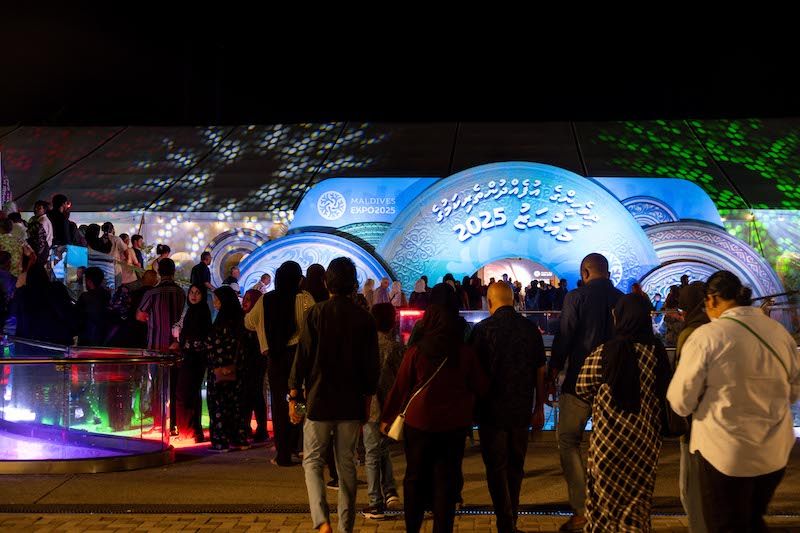
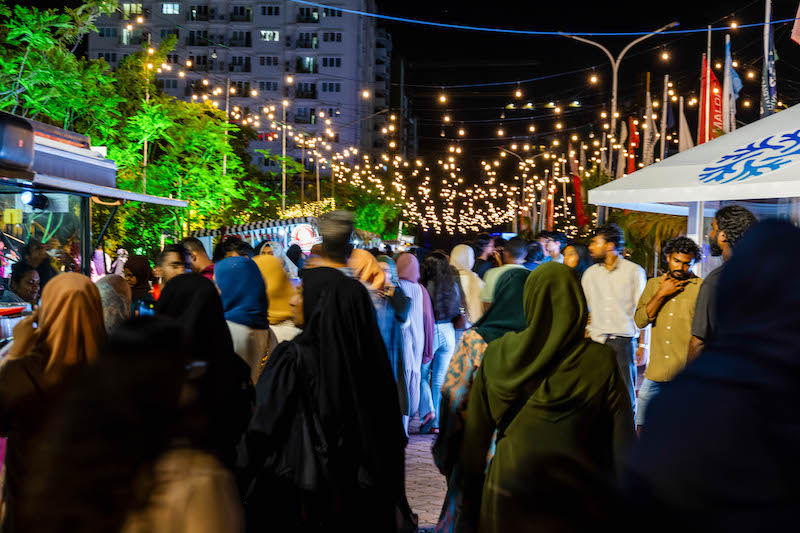
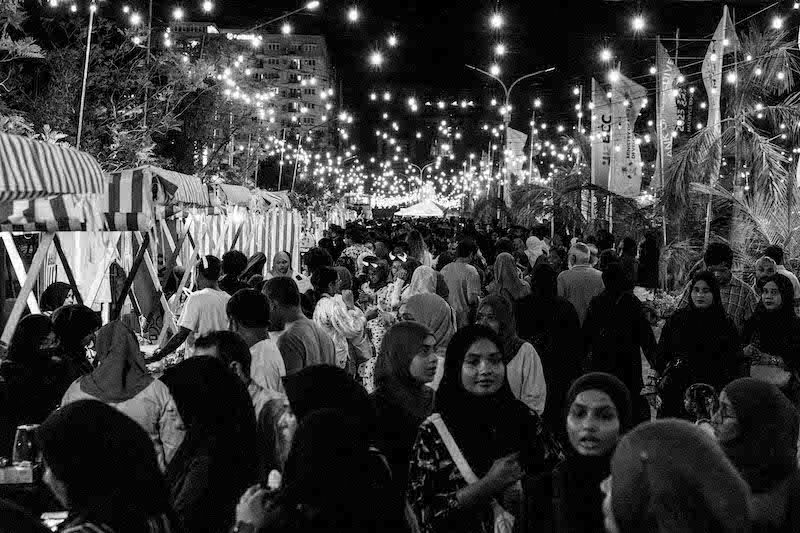
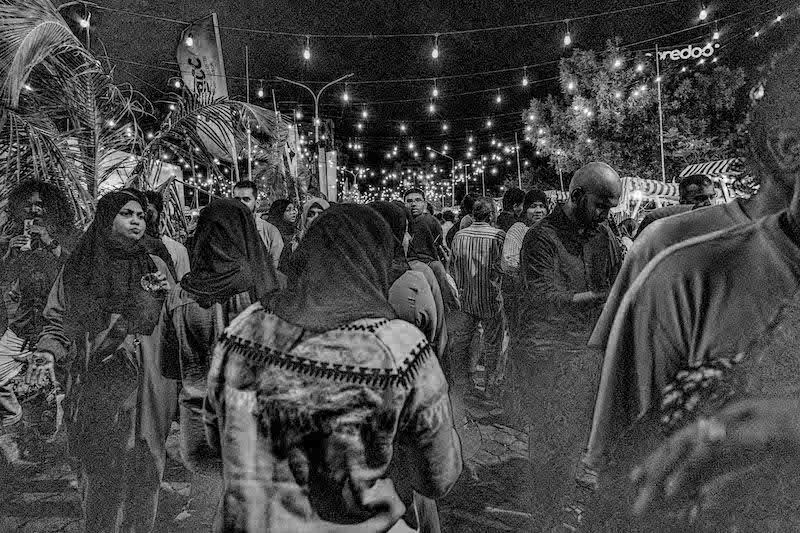
Cultural art and traditional handicrafts
Several Maldivian artisans exhibited their work, most of which required hundreds of hours or painstaking and intricate details.
Thundu kunaa
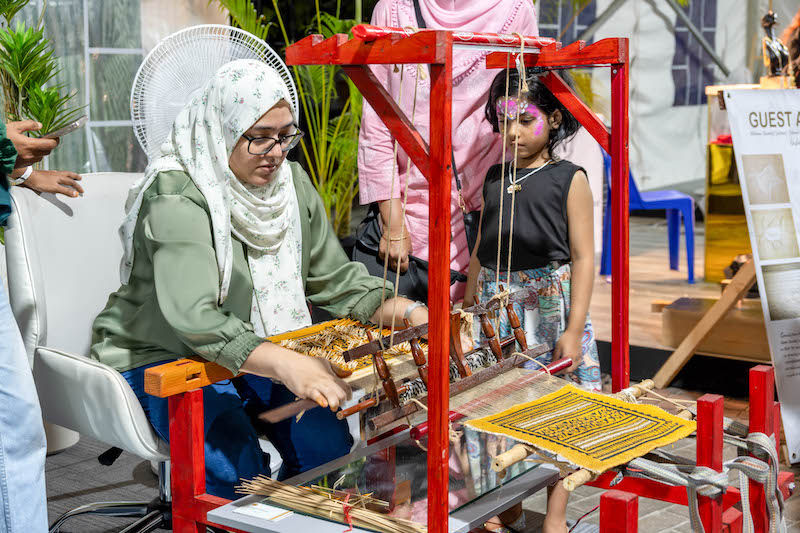
Weaving reed mats, known locally as thundu kunaa, is an ancient craft that is undergoing a revival on many islands. Reeds are harvested from mangrove swamps, dried and treated with natural dyes from tree bark and roots, before being woven on a handloom, one reed at a time. Artisans create complex designs with floral motifs on mats that were originally used for seating and sleeping.

A thundu kunaa is now more commonly used as art. Artisans are creating framed pieces as well as more modern takes, using mat designs as part of handbags or other accessories. This traditional craft was passed down from mother to daughter in a women-dominated field.
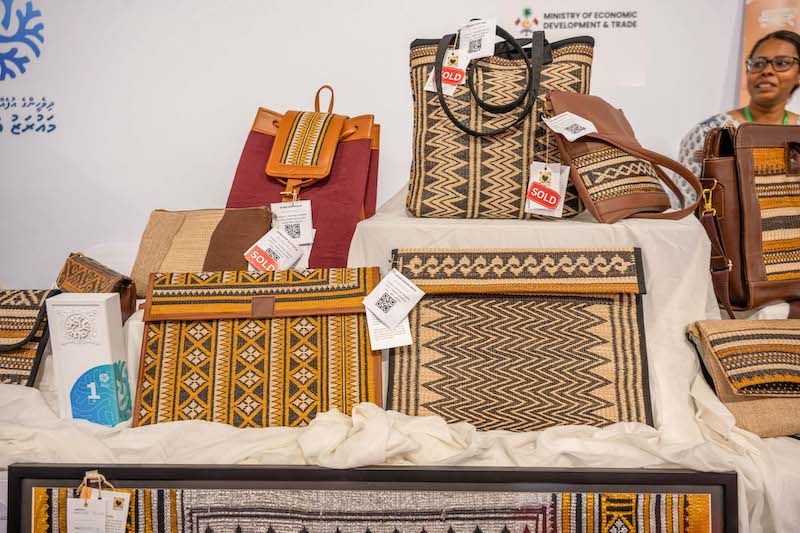
Liyelaa jehun
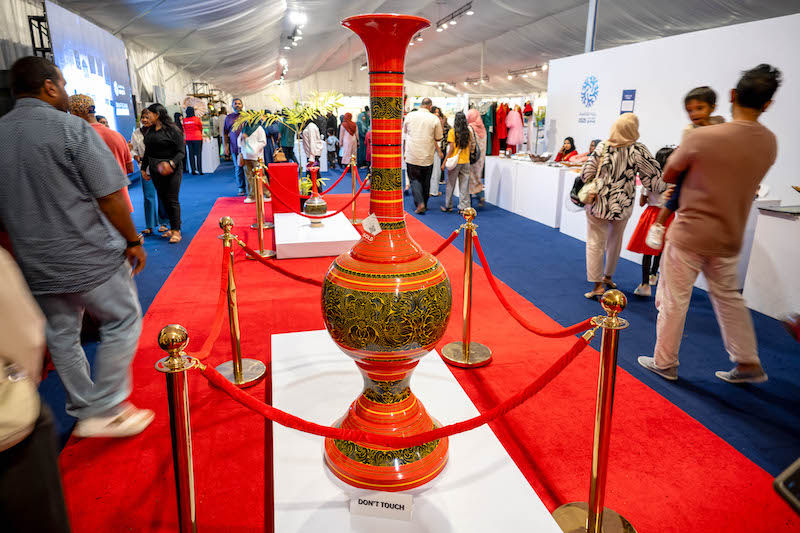
The Maldivian version of lacquer art – liyelaa lehun or laa jehun – is another artform that is being revived by the hard work of artisans passing on the knowledge to a younger generation. It involves coating wooden objects with layers of lacquer. Traditional patterns and motifs are then cut into the lacquer using knives to reveal colourful and intricate details.
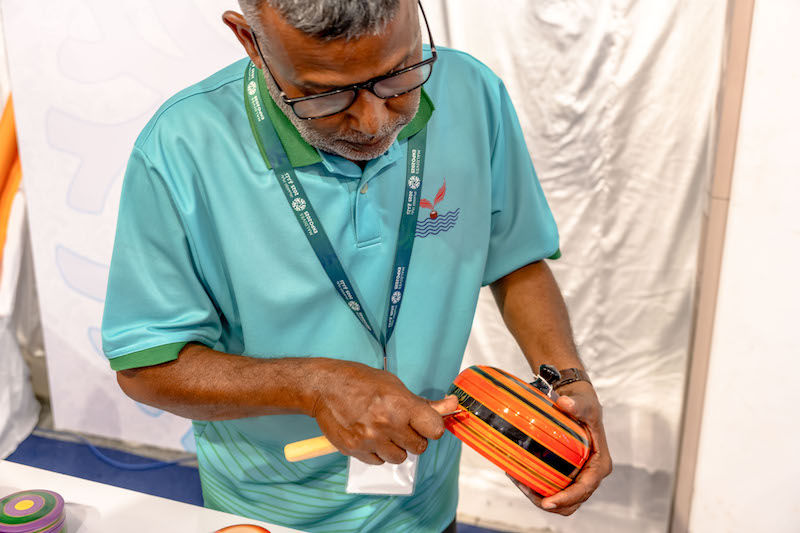
“It takes anywhere between a couple of days and up to a month to finish the lacquer work. If the designs are more complex and depending on the size of the object, you spend a lot of time and care carving these shapes,” Mohamed Ali Manik, who has been a lacquer artisan for 25 years, told the Maldives Independent.
The year’s expo included some breathtaking pieces of lacquer art from larger than life size decorative vases to small jewellery boxes.
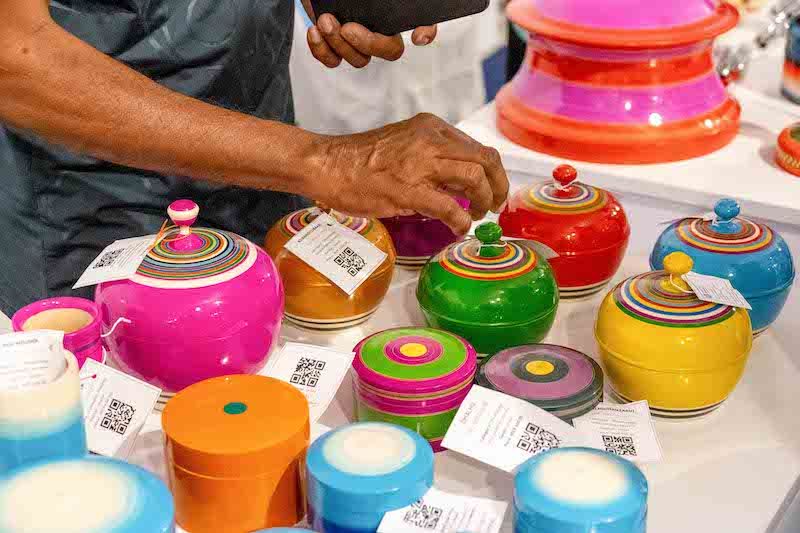
Traditionally, lacquer work depended on natural dyes that could be harvested in the Maldives, limiting the pigments to reds, yellows and blacks. However, artisans are now exploring a wider range of colours and non-traditional designs in their work.
Kasabu viyun
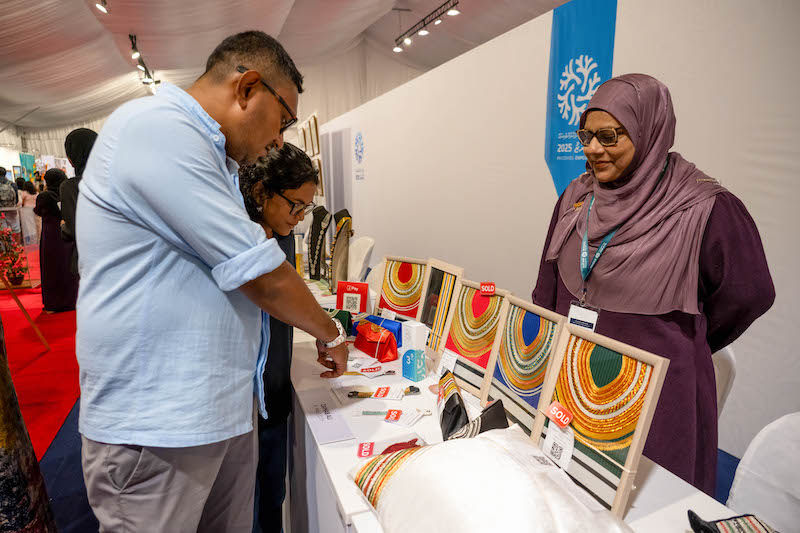
The adorned neckline (kasabu) and sleeves (kinaaree) that graces the traditional Dhivehi libaas takes hundreds of hours of handcrafted embroidery work.
This is another women-led traditional craft industry with knowhow passed down through generations, usually from mother to daughter. The gathaa fai is a wooden base that holds the gathaa fai ge boa, a cushion on to which threads are pinned as expert craftswomen use weighted bobbins to weave intricate designs. Some of the more complex designs use up to 34 bobbins with vivid coloured cotton, silk and metallic threads.
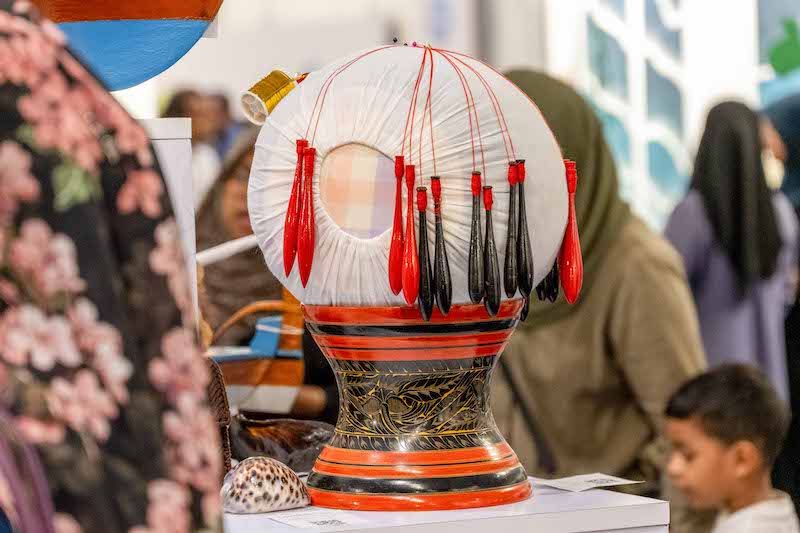
Zainab Ali, a 59 year old embroidery artisan from Malé, learned the craft 11 years ago.
“This used to be designed only for use as the necklines on the libaas, but now we are using the embroidered threads as hand bracelets, in cushion covers and also framed as art,” she told the Maldives Independent.
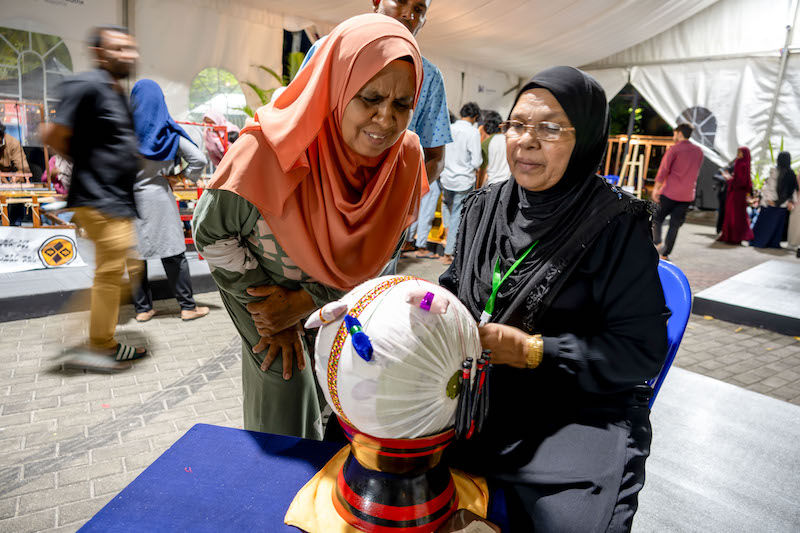
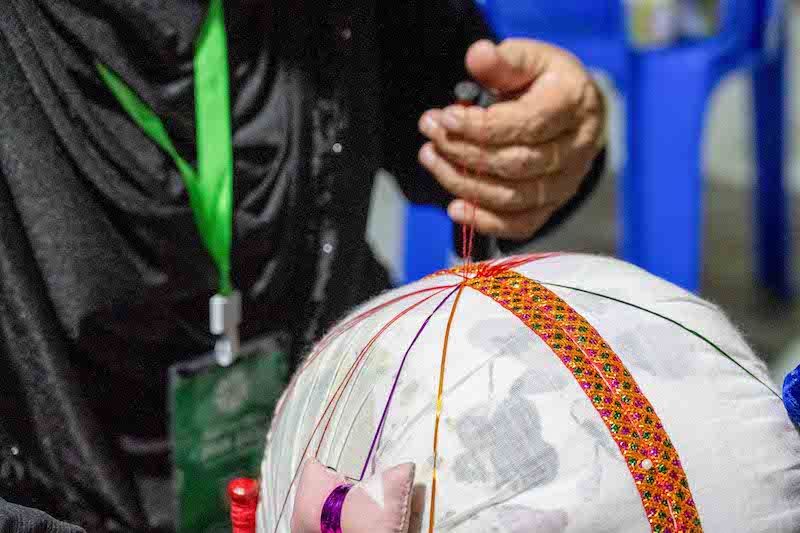
The kasabu necklines of the libaas also have regional diversity, which can be observed in the most ancient of this artform from the north to the south of Maldives, according to experts.
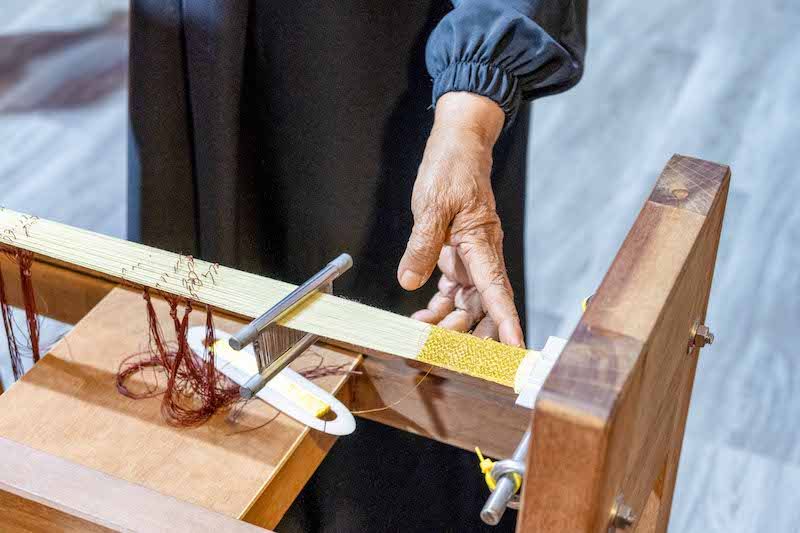
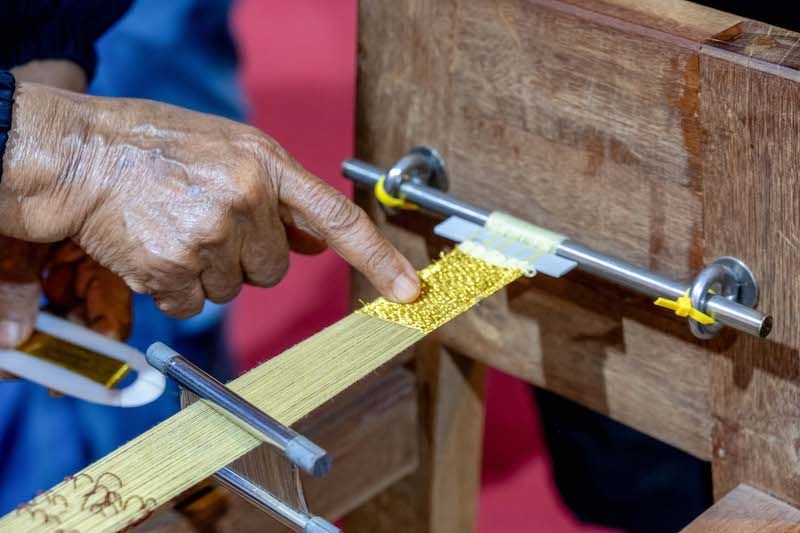
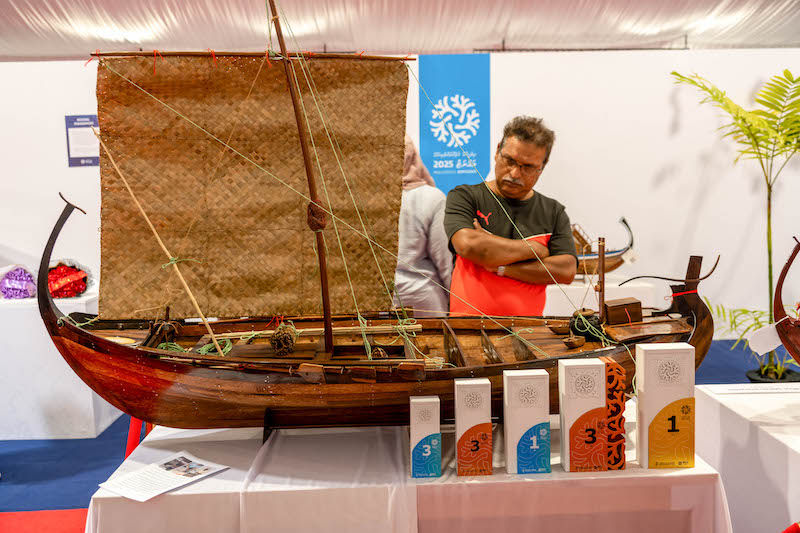
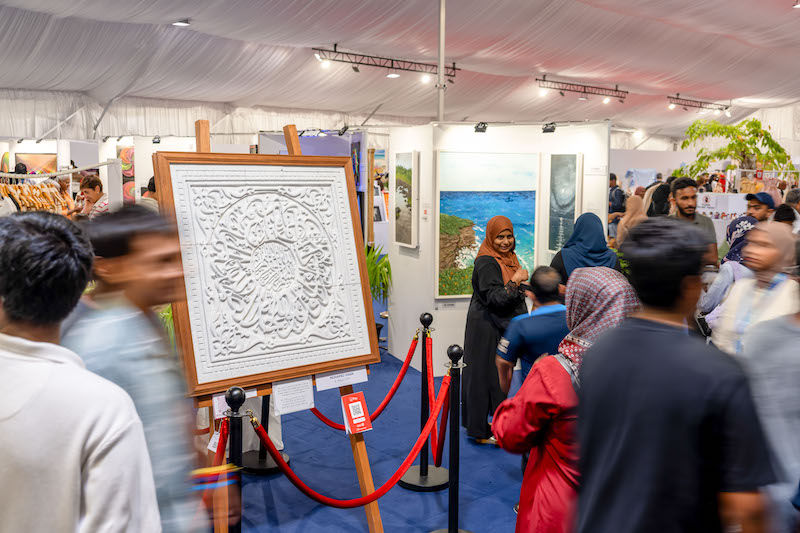
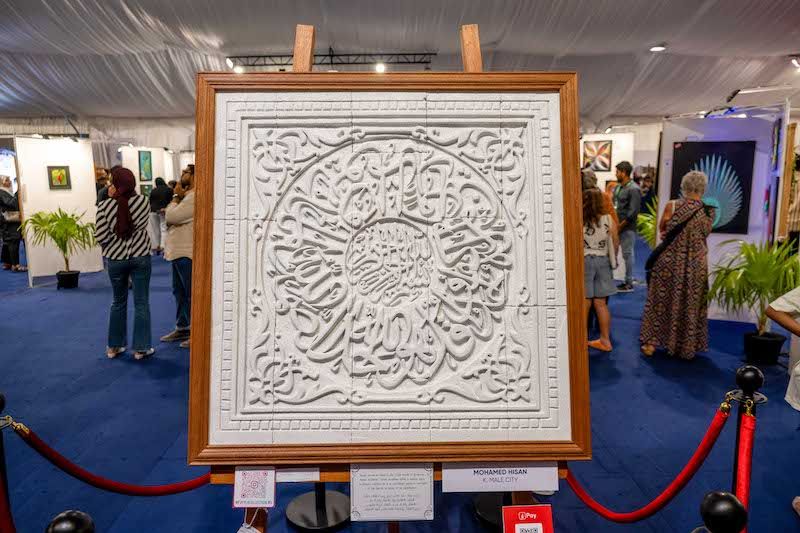
Mohamed Hisan’s exhibit was the only one at the expo that showcased traditional galu vadaan, the art of carving coral stone with ornate details. The design shows the calligraphed Quran surat Al-Ikhlaas, carved onto artificial stone.
This piece caused controversy after it was not evaluated for awards because judges suspected laser engraving. Since then, Hisan has shared behind the scenes video and photos of his process, proving the piece was entirely handcrafted.
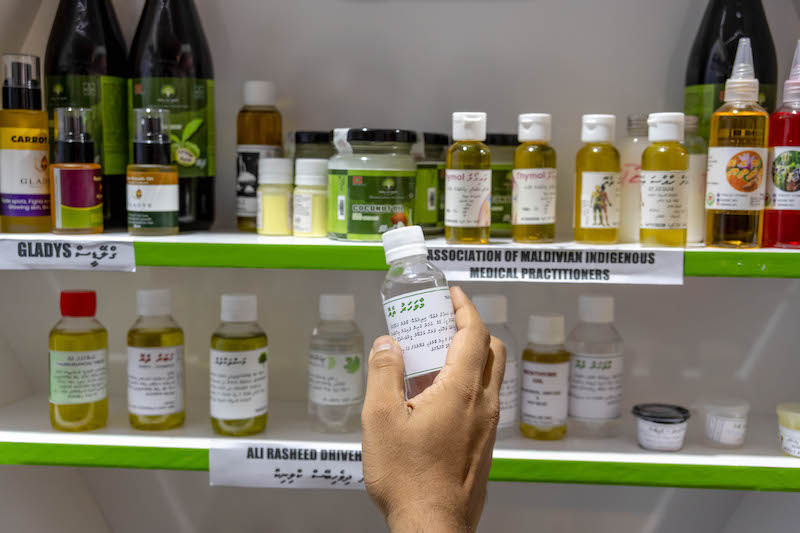
Maldivian indigenous medicine, which made use of local herbs, plants and natural remedies, was widely practiced before modern times.
Creative tech
DhivehiGPT and Thaana.AI showcased their artificial intelligence products, focusing on the use of Dhivehi language, including text-to-voice, voice-to-text, generative AI and associated products.
These new tools make it easier to use AI with Dhivehi, which is a limitation within existing global AI projects, as Dhivehi is a vernacular language spoken within a small population.
Local tech startup, LoopCraft, showcased their game development work with Little Island Adventure, a whimsical story where a little girl’s search for her grandfather spirals into a surreal journey filled with ancient secrets and a marine rescue quest.
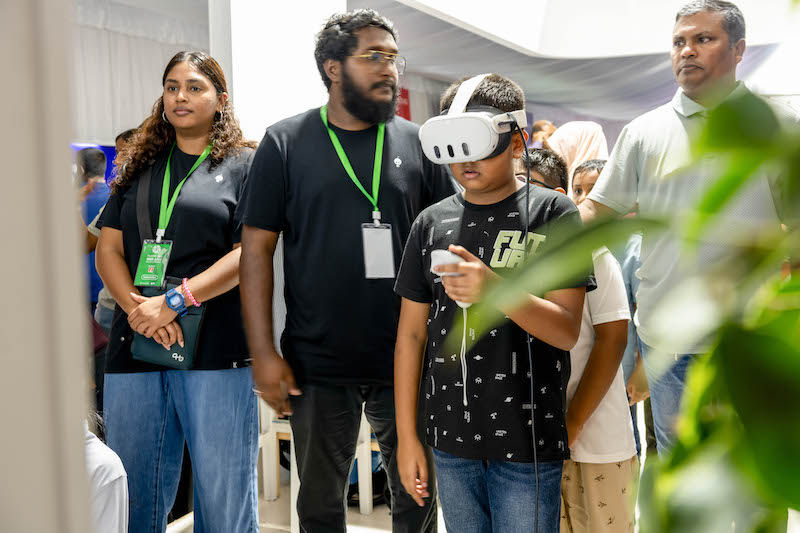
All photos by Maeed Mohamed Zahir.
Discussion
No comments yet. Be the first to share your thoughts!
No comments yet. Be the first to join the conversation!
Join the Conversation
Sign in to share your thoughts under an alias and take part in the discussion. Independent journalism thrives on open, respectful debate — your voice matters.

